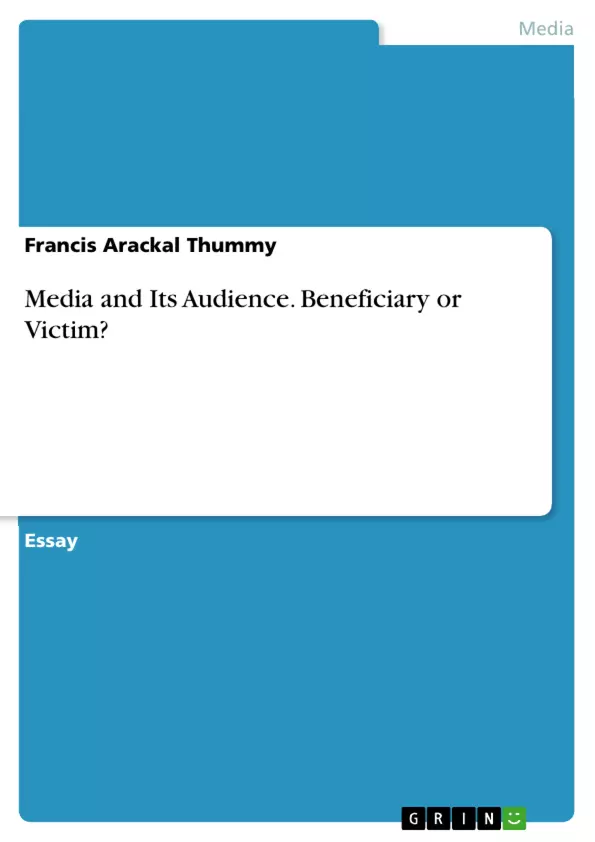The essay will first of all attempt to answer the question: "What is audience?" Next, it will probe in to the origin of the word "audience" and the gradually evolved uses of it and will go on to describe the various conceptions of audience. The essay also looks at media’s conception of audience. Measurement of audience is another important point that will be considered and then the question is posed: "Is audience research important?" It is also important to discuss the power of the audiences and the future of the audience concept.
Contemporary media scene is one of convergence mainly technological and corporate. Audience studies have always faced certain fluidity due to the dynamic nature of audience itself. This is more pronounced in the age of media convergence. All the same the paper will make an attempt to understand the phenomenon of audience – meaning, origin, and nature. Conceptions of audience are multiple. Contemporary audience phenomenon is characterized by massification. Massification has led to commodification conveniencing media houses and advertising firms to measure it, which in turn helps to rate various programmes, especially on broadcast media.
Of course, the power of the mass audience cannot be underestimated especially with the emergence of New Media, through social networking sites. Surely, audience fragmentation and polarization is an unavoidable fact arising from the contemporary mushrooming of media outlets. This poses numerous difficulties in the area of audience research – researching for audience and for commercial interests. The commercial research and audience measurement turns audience in to a market.
Table of Contents
- Introduction
- What is an audience?
- Origin of the term 'audience'
- Media Conception of the Audience
- Conceptions of Audience
- The Mass Audience: Its Origin
- Mass Audience as a Commodity
- Criticisms of the Mass Audience Concept
- The Power of the Mass Audience
- The Mass Audience in the New Media Environment
- Research on Audience
- Researching for the Audience
- Commercial Audience Research
- Audience Measurement
- The Audience as Market
Objectives and Key Themes
This paper examines the concept of media audience, exploring its meaning, origins, and evolving nature in the context of media convergence. It aims to understand the audience's significance in the media landscape, particularly in light of the rise of mass media and new media technologies.
- The changing nature of audience in a converging media environment
- The evolution of the concept of audience from its origins to contemporary applications
- The influence of mass media on daily life and its constitutive role
- The relationship between audience research and commercial interests
- The power and influence of mass audiences, particularly in the age of new media.
Chapter Summaries
The introduction lays out the importance of understanding media audience in today's world, highlighting the pervasive influence of media in everyday life. It argues that the audience is central to the media's economic and cultural power.
Chapter 2 explores the various definitions of audience, emphasizing that it is a complex and multifaceted concept, not a natural entity.
Chapter 3 traces the historical evolution of the term 'audience' from its original meaning of 'hearing' to its modern application as a collective body of receivers.
Chapter 4 examines media professionals' understanding of their audiences, suggesting that they often lack a clear or complete picture of their target demographics.
Chapter 5 delves into different conceptions of audience, including the 'aggregates,' 'mass,' 'public or social group,' and 'market' perspectives.
Chapter 6 explores the concept of the mass audience, its origin, and the various interpretations and criticisms surrounding it.
Chapter 7 discusses the two main approaches to audience research: research for the audience and commercial audience research.
Keywords
The central keywords and focus topics of this text are: media, audience, media convergence, audience measurement, journalists, mass audience, audience research, and the impact of new media technologies on audience behavior.
- Quote paper
- Prof. Francis Arackal Thummy (Author), 2017, Media and Its Audience. Beneficiary or Victim?, Munich, GRIN Verlag, https://www.grin.com/document/465945



